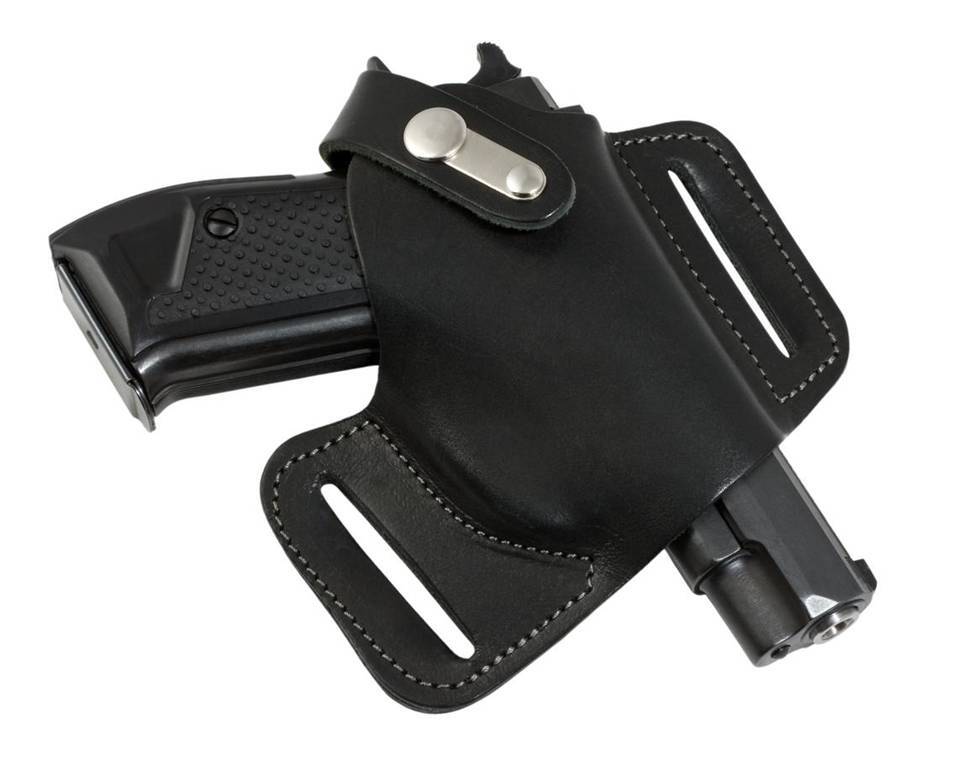5 Things Not to Do with Your Leather Holster
Mar 6th 2025
The verdict’s in. leather holsters are not just cooler than modern alternatives like Kydex and nylon, but they offer a whole bunch of practicalities that the competition just can’t match.
Leather is more comfortable, more supple and provides better protection for the gun. Plus, leather holsters will develop a custom-like fit over time that rivals even the best modern thermoformed holsters. If that weren’t enough, leather is dripping with cool factor. So of course those are some good reasons to upgrade your carry holster to leather.
There’s just one small catch. Leather, unlike its modern plastic brethren, does require some special care and attention. You will ruin a holster made of leather if you aren’t careful. So, with that said, here are 5 things you don’t want to do, provided you don’t want to ruin your new leather holster.
Never Wear It
The first and most important rule of your new leather holster is that if you want to realize some of the benefits it offers, you have to use it. It’ll be a little stiff and might not be so comfortable for the first few months, but the only way to change anything about that is to wear it. Keep the gun in it and wear it when you carry. There is no substitute to use for break-in, and that’s an unfortunate truth that can be a bit hard to hear. Either way, that holster isn’t going to break itself in, and to do so, you need to wear it.
Forget to Condition It
One thing about leather is that it, unlike Kydex and nylon, does need to be periodically maintained. If you never do anything with those plastics, nothing happens. If you never do anything with leather, over time it will get stiff, then brittle, and eventually it will either warp or crack, or worse, both. The way to prevent this is to stick to a consistent routine maintenance schedule, and most importantly, that that maintenance schedule includes conditioning.
There are many conditioners you can use. Some are commercial blends, others are simple mixes of oils or waxes like neatsfoot oil and beeswax. These conditioners will soften the leather and fill its pores, driving out moisture and helping the leather keep its structure and shape so that it doesn’t get stretched out, warped, or start to crack. Every few months, make sure you properly treat your leather holster.
Be Afraid to Subject It to Harsh Conditions
One thing not to forget about leather holsters is that, for better or worse, they’re pretty darn tough. As tough if not tougher than Kydex holsters. Like wearing a leather holster, the best way to make sure it gets properly broken in is to subject it to harsh conditions. Wear it in high and low temperatures, subject it to some precipitation, beat it up (softly) a little bit, and your holster will break-in faster, offer a better fit, and be more comfortable at the end of it.
Dry It Out Too Fast
While you don’t ever want to leave your leather holster wet (see below) what’s more damaging than moisture itself is the method of removal. If you dry out leather too quickly, the leather will deform, warp, or crack, or some combination of all three. Therefore, you never want to place your leather holster on or near a heat source like a fire, a furnace, or a dryer. Instead, you want to dry it out slowly. Place it somewhere warm and dry, in an area that has good air circulation, and let that work to your advantage.

Let It Stay Wet
Notice this doesn’t say “let it get wet.” Life happens. You could get caught in the rain or spill something on your holster. While that’s not ideal, it’s just a fact of life. We need to be able to respond appropriately. Besides, some holsters are wet-formed to speed up break-in.
The bottom line is if your leather holster gets wet, even soaked, it’s not the end of the world. You just need to know what to do next. First, if the gun is in the thing, get it out of there. Submerging a gun is a fast-track to rust. Make sure you strip, clean and dry the gun if it gets a soaking.
Then, place the holsters somewhere cool and dry - not in front of a heater or a fire, as you were cautioned against in the last section. You can stuff it with newspaper or paper towels to speed along the process. Change them every few hours to move things along. Keeping your leather holster from remaining damp after it gets wet is the best way to make sure it doesn’t warp, crack, or develop mold or mildew.
Your Next Leather Holster Is Here
Among the leather holsters we carry are leather 1911 holsters as well as holsters for military revolvers from a bygone era. Take a look through our collection and remember, if you want your holster to last, avoid the mistakes mentioned in this post!

